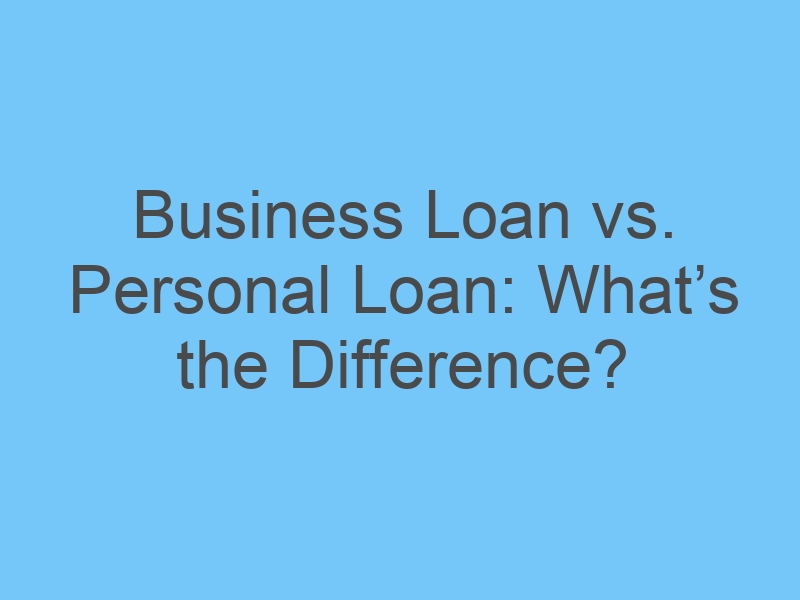
Business Loan vs. Personal Loan: What’s the Difference?
Business loans and personal loans are both types of financing, but they are intended for different purposes and have distinct characteristics. Here’s an overview of the key differences between business loans and personal loans:
Business Loan:
- Purpose: Business loans are specifically designed to provide funding for business-related expenses, such as starting a new business, expanding an existing one, purchasing equipment, hiring employees, covering operational costs, or investing in projects.
- Borrower: The borrower for a business loan is a legal business entity, such as a sole proprietorship, partnership, limited liability company (LLC), or corporation. The loan is based on the business’s financial health, creditworthiness, and potential for repayment.
- Approval Criteria: Business loans often require a thorough evaluation of the business’s financial statements, business plan, credit history, revenue projections, and collateral (if applicable). Lenders assess the business’s ability to generate revenue and repay the loan.
- Loan Amount: Business loans can vary widely in terms of loan amount, depending on the lender, business size, industry, and purpose of the loan. They can range from relatively small amounts to large sums.
- Interest Rates: Interest rates for business loans can vary based on factors such as the business’s creditworthiness, the lender’s terms, and prevailing market conditions. Rates can be fixed or variable.
- Repayment Terms: Business loans typically have structured repayment terms, which may include monthly payments over a set period. Some loans may also offer flexible repayment options based on the business’s cash flow.
- Collateral: Many business loans require collateral, which is an asset that the lender can seize if the business defaults on the loan. Collateral can include business assets, real estate, or personal assets.
Personal Loan:
- Purpose: Personal loans are intended for individual purposes, such as consolidating debt, paying for medical expenses, funding education, home improvements, or other personal needs.
- Borrower: The borrower for a personal loan is an individual person. The loan approval is often based on the individual’s credit score, income, employment history, and debt-to-income ratio.
- Approval Criteria: Personal loans primarily consider the borrower’s creditworthiness and ability to repay. Lenders assess the individual’s credit report, income, and other financial factors.
- Loan Amount: Personal loan amounts can vary based on the lender, borrower’s credit profile, and purpose of the loan. They generally tend to be smaller than business loans.
- Interest Rates: Interest rates for personal loans are typically determined by the borrower’s credit score and history. Rates can be fixed or variable.
- Repayment Terms: Personal loans usually have fixed repayment terms, often ranging from two to seven years. Borrowers make regular monthly payments over the loan term.
- Collateral: Most personal loans are unsecured, meaning they don’t require collateral. However, some lenders might offer secured personal loans that are backed by assets like a vehicle or savings account.
In summary, business loans are tailored for business-related expenses and are evaluated based on the business’s financial health. Personal loans are designed for individual needs and are based on the borrower’s personal creditworthiness. It’s important to carefully consider the purpose of the loan and the terms offered by different lenders before deciding which type of loan is most appropriate for your situation.

Dr Clara Lee is specializes in aesthetic/cosmetic plastic surgery of the face, nose, breast and body, and is considered one of the best facial plastic surgeons in the world. MD, FACS, is highly qualified and experienced in the field of plastic surgery and aesthetic care and has performed over 10,000 surgical procedures.
About
Dr. Clara Lee couples his outstanding professional credentials and ethics with a personalized approach to patient care and a keen eye for aesthetic beauty.
Specialties: plastic surgeon, plastic surgery
by Clara Lee
Reviewed by Clara Lee
approved by Dr Clara Lee
Leave a Reply